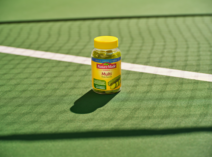Three wildfires burning through California have scorched more than 210,000 acres across the state combined, destroyed thousands of homes and structures and forced thousands more to evacuate.
In Northern California, the Camp fire has ravaged the town of Paradise. According toThe Los Angeles Times, the death toll from the Camp fire in Paradise reached 42 on Monday, making it the deadliest fire in state history.
In Southern California, The Los Angeles Times reported that the Woolsey fire, which broke out Thursday in Ventura County and spread to Malibu, has destroyed approximately 435 homes and businesses, and that approximately 57,000 structures are still threatened. Two people have also been reported to have died as a result of this fire.
CNN alsoreportedthat The Hill Fire, another active fire, covered 4,531 acres and was 85 percent contained by Monday night.
The Camp and Woolsey fires together could cost the state, insurers and homeowners at least $19 billion in damage,Bloombergreported. Also at stake is parts of California’s billion dollar agriculture industry. While estimates for damages to organic crops are still limited at this time, previous disasters could provide some insight.
Following the Thomas Fire in 2017, officials in Ventura County, also where the Woolsey fire broke out, estimated the damages to crops and farm structures, and reported losses exceeding $171 million, with more than 70,000 acres of cropland and rangeland affected, according toAgAlert.
That fire hit avocado growers particularly hard. Officials estimated that in Ventura County, it cost them $10.2 million in losses. The county has approximately 18,500 acres of avocados, with 6,603 acres affected by the fire and 1,250 acres that suffered damage, according to AgAlert.
More recently,CNBCreported that Hurricane Michael, which hit the U.S. Southeast in early October 2018, caused $1.3 billion in agricultural damage in the region, with $1.2 billion of that total coming from Georgia alone.
Other damages include approximately 100 chicken houses being destroyed in Georgia, including more than 2 million chickens, and Florida suffering damage to at least 3 million acres of timber, according to CNBC.
Hurricane Florence struck North Carolina in September 2018. CNBCreportedthat North Carolina's poultry sector lost at least 3.4 million birds, including chickens and turkeys, as a result of Florence, Officials also reported that the swine industry lost approximately 5,500 hogs.
In light of recent natural disasters, two companies in the organic industry are coming together to ensure that in the future, communities in crisis will get the help they need.
Grassroots Aid Partnership, a recently established non-profit that strives to help communities in need, was founded by Organic Valley CEO George Siemon and David Bronner of Dr. Bronner’s, according toNew Hope.
Bronner recently spent a weekend in Rocky Point, North Carolina, giving back and supporting people in need following Hurricane Florence.
“A local church (Lighthouse Worship Center) was set up and feeding everyone but was very overwhelmed,” Bronner said. “So we got our kitchen in there with FFRE (Family of Friends Relief Effort), Rainbow Family and Organic Valley.”
They provided meals to residents as well as different products offered by both companies, according to New Hope.
GAP Donations Coordinator Amanda Krause said they served approximately 13,500 meals, handed out bottles of Dr. Bronner’s soap and distributed more than 35,000 pounds of Organic Valley and Sanderson Farms organic dairy and meat products, in support of the people affected by the hurricane.
Bronner said this represents an opportunity for natural product brands to participate in the community in a meaningful way, New Hope reported. Siemon said he hopes other companies will now join them following the non-profit being formalized.
“it’s so much more than just handing out a bottle of water to somebody,” he said. “When you bring the food and cook for people, it turns it into a whole other personalized experience.”

Nature Made Makes Waves With Pickle-Flavored Gummies
April 15, 2024








